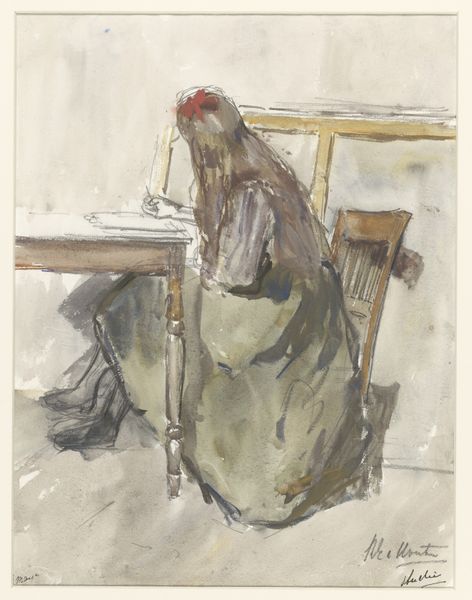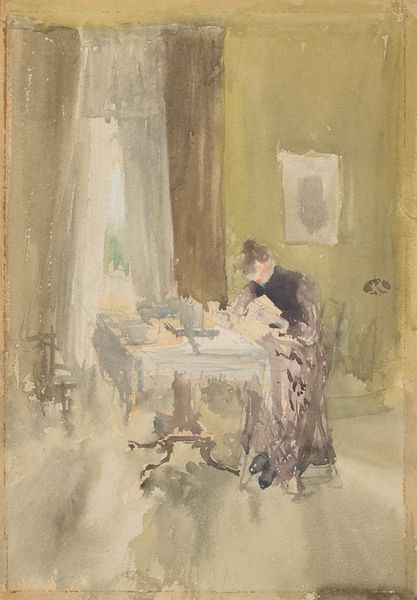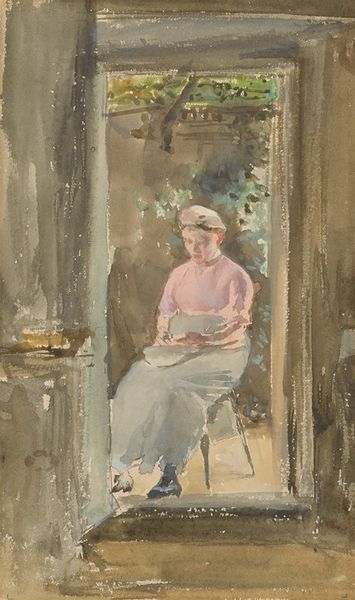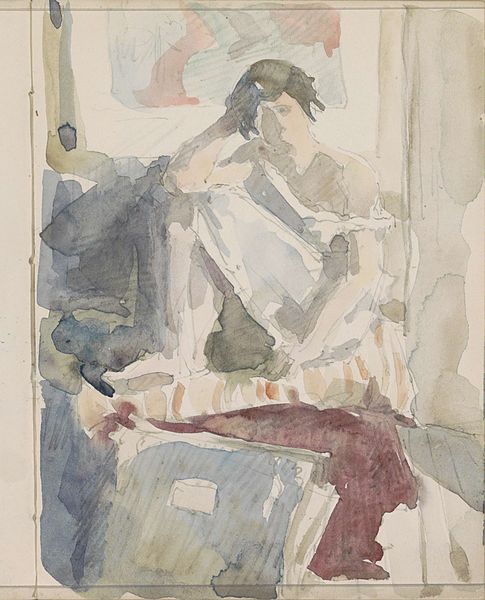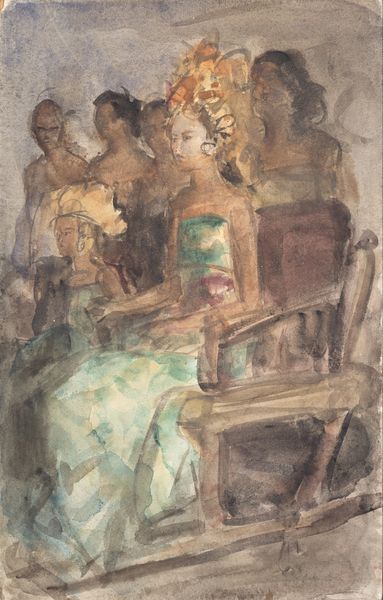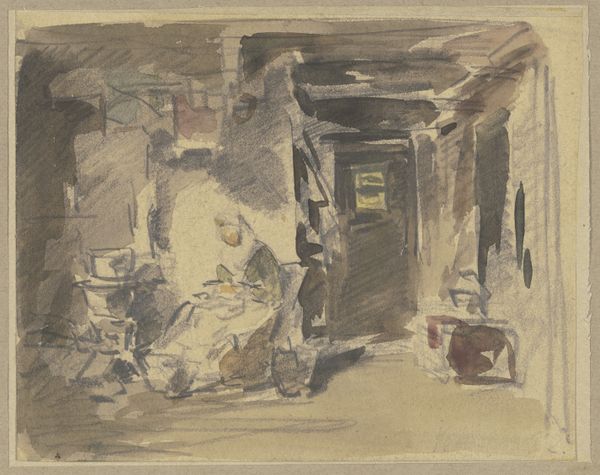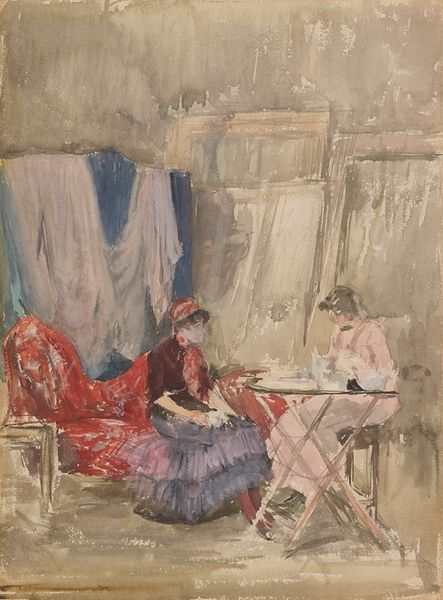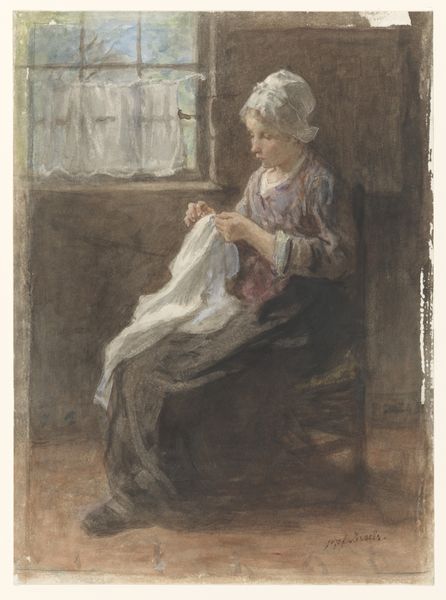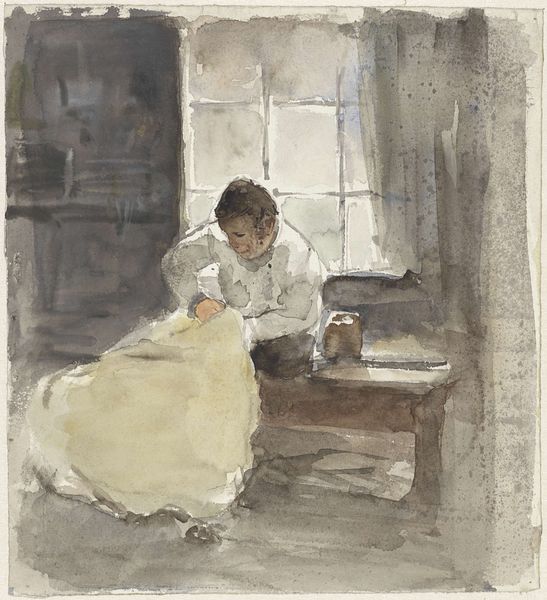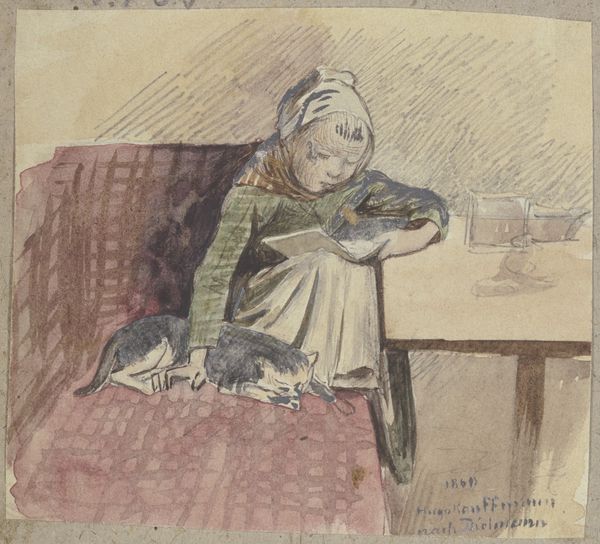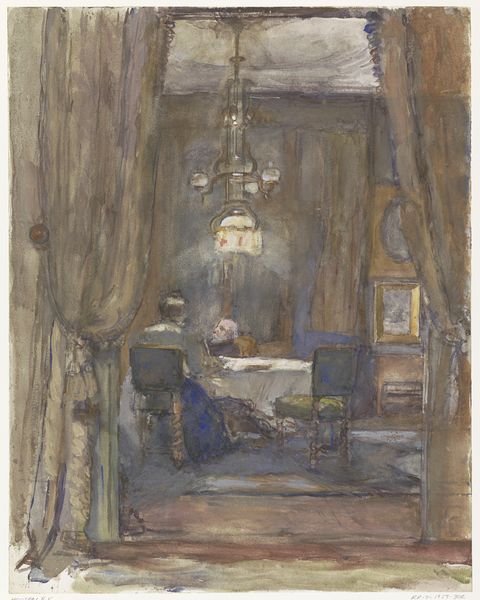
Copyright: Public Domain
Editor: This watercolor and ink drawing, "Knitting Woman" by Gustav Schraegle, created in 1899, really captures a sense of quiet domesticity. What strikes me most is the artist's focus on her hands and labor, more than her face. What do you see in this piece? Curator: For me, it’s deeply rooted in the context of late 19th-century labor. Think about the materials: paper, watercolor, and ink. These are accessible, relatively inexpensive, highlighting the artist's own means of production. The woman's repetitive action of knitting elevates everyday labor. Editor: I see what you mean. It's not about the final product, but the process. Curator: Exactly. And watercolor allows for a kind of quick, almost ephemeral capturing of this process, reflecting the time and labor invested by both artist and knitter. What do you think about the fact it's not an oil painting on canvas? How does this relate to who had access to art production, versus craft? Editor: That's interesting. It makes me think about who art was for at this time and how class affected not only what was depicted, but what materials were used to depict it. Do you think it’s also challenging those established hierarchies? Curator: Absolutely! Schraegle makes us question what is considered "high art." Is it the subject matter, or is it the material and labor embedded in its creation? It encourages us to examine social hierarchies through the very means of its creation. Editor: That definitely changes how I view the work, appreciating its layers of meaning embedded in both subject and material. Thanks for sharing your insights. Curator: My pleasure. I'm glad we could unpack the making of the work today.
Comments
No comments
Be the first to comment and join the conversation on the ultimate creative platform.
